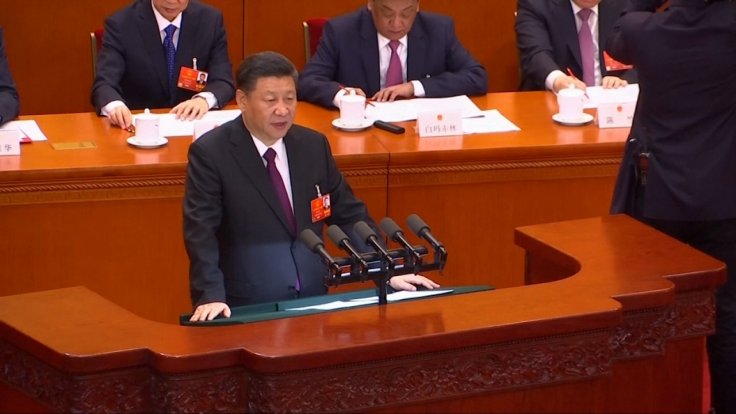It has been exactly a year since the first case of the novel Coronavirus infection was noticed in Wuhan, China. During this period, China has been accused of mishandling the outbreak in the early days, leading to the spread of the virus across the world.
China denied the accusations saying its handling of the virus was impeccable and that was the reason it managed to control the outbreak. However, according to newly-leaked documents, China's claim falls flat. Instead, Chinese authorities underestimated the virus and took weeks to respond.
According to the 117-pages long leaked document, in Hubei province, where the first cases of the virus emerged, authorities were not prepared to deal with an outbreak. Instead, authorities were understaffed, underfunded, lacked proper testing equipment and took weeks to start diagnosing new cases of the virus. The internal documents were from the Hubei Provincial Center for Disease Control and Prevention.
"It was clear they did make mistakes — and not just mistakes that happen when you're dealing with a novel virus — also bureaucratic and politically-motivated errors in how they handled it," Yanzhong Huang, a senior fellow for global health at the Council on Foreign Relations, told CNN, which obtained the leaked documents.

Under-reporting Cases
As per the documents, China chose to suppress the impact of the outbreak, reporting a smaller number of cases. A source inside the Chinese healthcare system told CNN that the situation was grimmer than what authorities reported. The inconsistencies in reporting numbers were results of suppressing bad news according to analysts.
On February 10, 2020, China reported 2,478 new cases but as per the leaked documents, the number was 5,918. Of that, 2,345 were confirmed cases while 1,772 were already clinically diagnosed and 1,796 were under the suspected category.
William Schaffner, an infectious disease professor at the Vanderbilt University (U.S.), said that by underreporting cases, China seemed "to minimize the impact of the epidemic at any moment in time." "To include patients who were suspected of having the infection obviously would have expanded the size of outbreak and would have given, I think, a truer appreciation of the nature of the infection and its size," he added.
There were discrepancies in reporting the number of deaths as well. According to official reports, the death toll as of March 7 was 2,986 but the internal document revealed that the actual number was 3,456. As for diagnosing new cases, authorities took 23.2 days on average and that was a setback for doctors to treat and isolate patients.

Was Beijing Aware?
As China's top-down political system often points at Beijing at fault, in this case, there is no evidence that President Xi Jinping or his staff were aware of the ground reality in Hubei. While Beijing was at fault for not funding its regional centers for disease control properly, by mid-March, things did improve after the top provincial health official was fired.
However, underreporting new cases continued as China refused to report asymptomatic cases as confirmed ones. With a shortage of testing, doctors in Hubei turned to chest X-ray and CT scan to diagnose COVID-19, considering them "clinically diagnosed". But the clinically diagnosed number was not officially added to the total tally.
"China had an image to protect internationally, and lower-ranking officials had a clear incentive to under-report or to show their superiors that they were under-reporting to outside eyes," Andrew Mertha, Director of the China Studies Program at Johns Hopkins University, said.

Spike in Influenza Cases
The virus emerged sometime in 2019 in Hubei but China never officially revealed cases of COVID-19 of the year. In early December of 2019, there was a massive influenza outbreak in the region. By December 2, the cases spiked by 2,059 percent compared to the time in the previous year. However. It was not Wuhan where the spike was noticed. Neighboring city Yichang was the worst-hit with 6,135 cases while another nearby city Xianning reported 2,148 cases. Wuhan was the third-worst hit with 2,032 cases of flu.
The fact that influenza and COVID-19 have similar symptoms, it is difficult to understand if flu patients were actually infected with the novel Coronavirus. But as hospitalization increased, it could be possible for them to get infected with the novel Coronavirus there. So far, the only indication of any likely COVID-19 cases of 2019 is the 44 cases of "pneumonia of unknown etiology". This was what China reported to the World Health Organization (WHO) on January 3.
With the healthcare system already overwhelmed by the influenza outbreak, it was possible that the hospitals and authorities were overrun and failed to properly respond to the COVID-19 epidemic initially. "There was truly despair among medical professionals by the end of January because they were extremely overworked and they were also enormously discouraged by the high number of deaths that were occurring with a disease they had not treated previously," said Dali Yang, who is a member of the Council of Foreign Relations.









